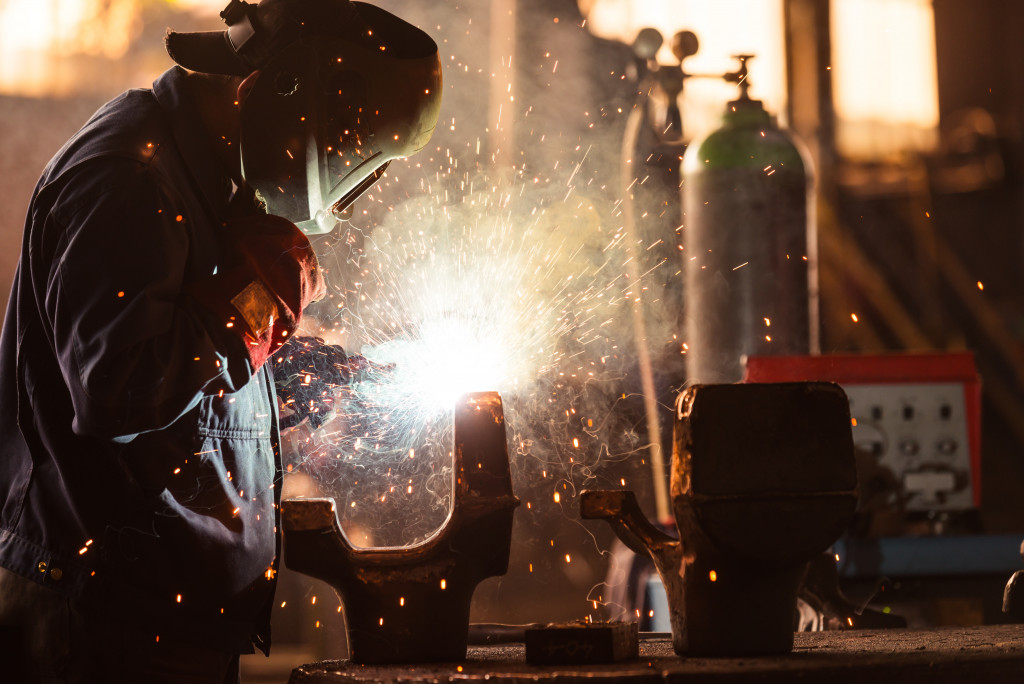- Promote personal responsibility, conduct regular safety audits, invest in adequate safety equipment, and encourage well-being to establish a safety-conscious culture.
- Ensure all work equipment is inspected and maintained regularly, and employees are properly trained on its usage.
- Draft emergency protocols, invest in ergonomic furniture/tools, and hire commercial electrical contractors for comprehensive inspections.
- By adopting these practices, you demonstrate your commitment to the safety and well-being of everyone in your workplace.
Ensuring a safe workplace is not just a legal obligation but also a fundamental responsibility of every employer. A safe environment fosters productivity, trust, and morale among employees. Adopting a proactive approach is crucial in your quest to create and maintain such a space. Dive into these five actionable tips that will guide you in bolstering safety within your workplace.
1. Foster a Culture of Safety Awareness
A safety-conscious culture begins at the top. As an employer or manager, lead by example. Regularly communicate the importance of safety, ensuring it is always on everyone’s minds.
Here are tips to foster a culture of safety awareness:
Promote Personal Responsibility
Every employee plays a crucial role in maintaining a safe environment. Promote personal responsibility by emphasizing that safety is everyone’s concern. Encourage staff to report potential hazards and not ignore or walk past anything that might cause harm. The idea of ‘if you see something, say something’ should be part of the company culture.
Implement Regular Safety Audits
Regular safety audits are essential to uncover hidden risks and ensure compliance with safety standards. These audits will help you identify areas of improvement, rectify problems, and update safety protocols if necessary. Feedback and suggestions obtained from these audits can be used to enhance the existing safety measures and ensure a safer work environment.
Invest in Adequate Safety Equipment

Providing appropriate safety gear and equipment is crucial for a safe workplace. Ensure employees are equipped with the necessary PPE (Personal Protective Equipment) and that the equipment is maintained in good working condition. Regularly check and replace any faulty equipment to prevent accidents.
Encourage Well-being and Mental Health
Besides physical safety, mental health is critical to workplace safety. Encourage employees to speak up about stress or concerns that might impact their mental well-being. Consider implementing initiatives like flexible working hours, stress management workshops, and providing resources for mental health support. A mentally healthy workforce is more likely to be productive and safe.
2. Regularly Inspect and Maintain Equipment
Work equipment, irrespective of its nature, requires regular inspection and maintenance. Faulty machinery isn’t just inefficient—it’s a significant safety risk. Ensure all equipment is checked consistently and any issues are addressed promptly. Maintain a log of these inspections to track equipment health over time.
Additionally, instruct your employees on the correct usage of equipment. Even the safest machinery can become hazardous when used improperly. Ensure that workers have access to user manuals and are trained to identify signs of wear and tear that could lead to malfunctions.
3. Implement Robust Emergency Protocols
Emergencies are unpredictable, but your response to them shouldn’t be. Draft clear emergency evacuation plans and ensure they are visible throughout the workplace. This includes marked emergency exits, accessible first aid kits, and fire extinguishers. Regularly conduct drills to ensure everyone is familiar with the protocols.
Moreover, establish a designated emergency response team. This team should be trained in first aid, CPR, and other essential emergency response techniques. Their preparedness can make all the difference during a critical situation.
4. Encourage Ergonomic Practices

Physical safety isn’t just about preventing accidents. Prolonged periods of incorrect posture or repetitive tasks can lead to musculoskeletal problems over time. Invest in ergonomic furniture and tools that support good posture and reduce strain. Adjustable chairs, standing desks, and keyboard/mouse setups can all contribute to a more ergonomic environment.
Furthermore, educate your employees about the importance of regular breaks. Encourage them to stretch, move around, and adjust their sitting position periodically. Small actions like these can prevent long-term physical issues and enhance overall well-being.
5. Ensure Electrical Safety Through Expertise
Electricity is a silent enforcer of many modern workplaces, but it’s not without its hazards. Regular inspections of electrical systems are crucial. Faulty wiring, overloaded circuits, or compromised equipment can lead to fires or electrocution. For this, it’s recommended to collaborate with professional commercial electrical contractors who are experts in their domain.
Hiring commercial electrical contractors ensures that all electrical systems are up to code. These professionals can conduct comprehensive audits, recommending upgrades or repairs where necessary. Their expertise ensures that your electrical setups are safe and optimizes them for efficiency, potentially saving on energy costs.
In Summary
Workplace safety is an ongoing commitment. By fostering a culture of awareness, regularly maintaining equipment, preparing for emergencies, promoting ergonomics, and ensuring electrical safety through expert partnerships, you pave the way for a workplace that is not only productive but also secure and trustworthy. By putting these practices into action, you’re not just ticking off a regulatory checklist; you’re showcasing your dedication to the well-being of every individual under your roof.
